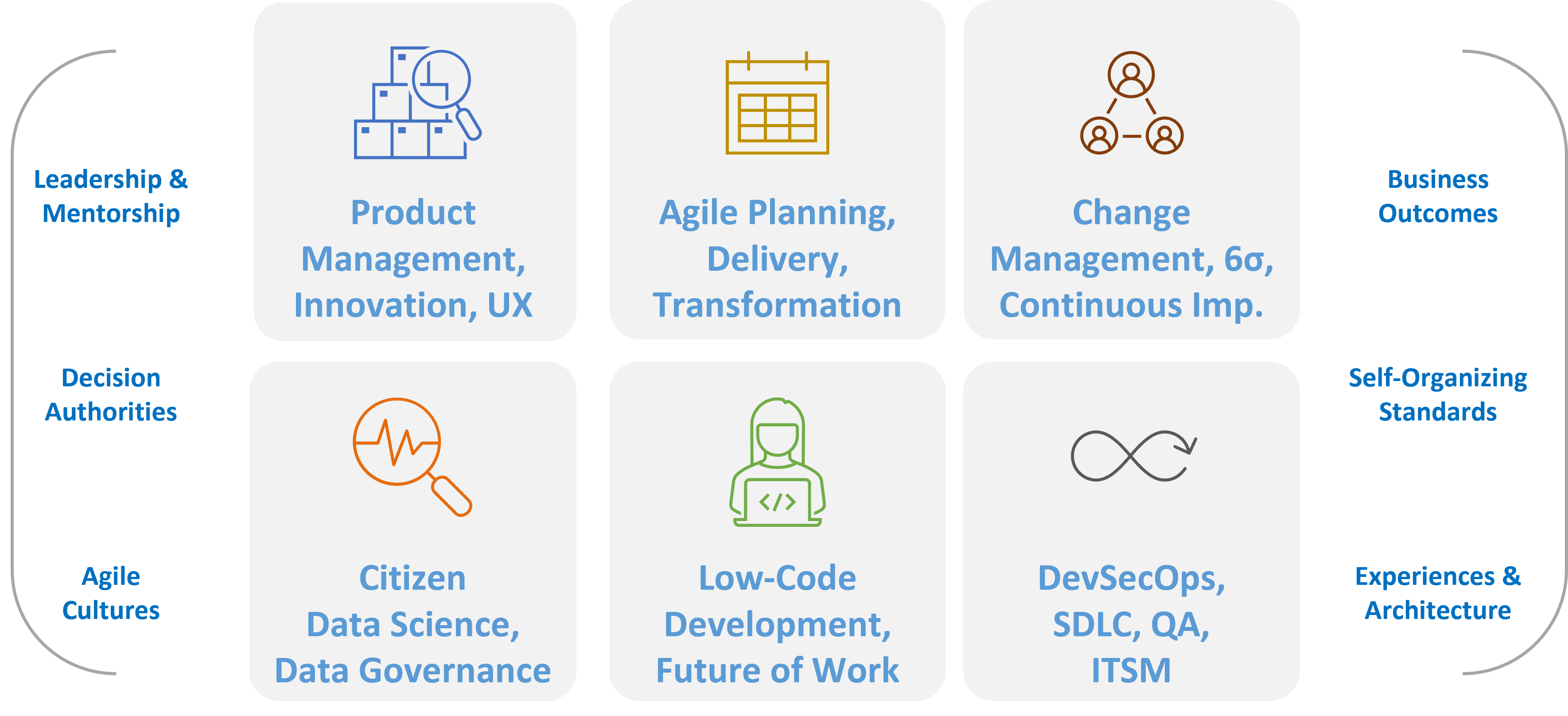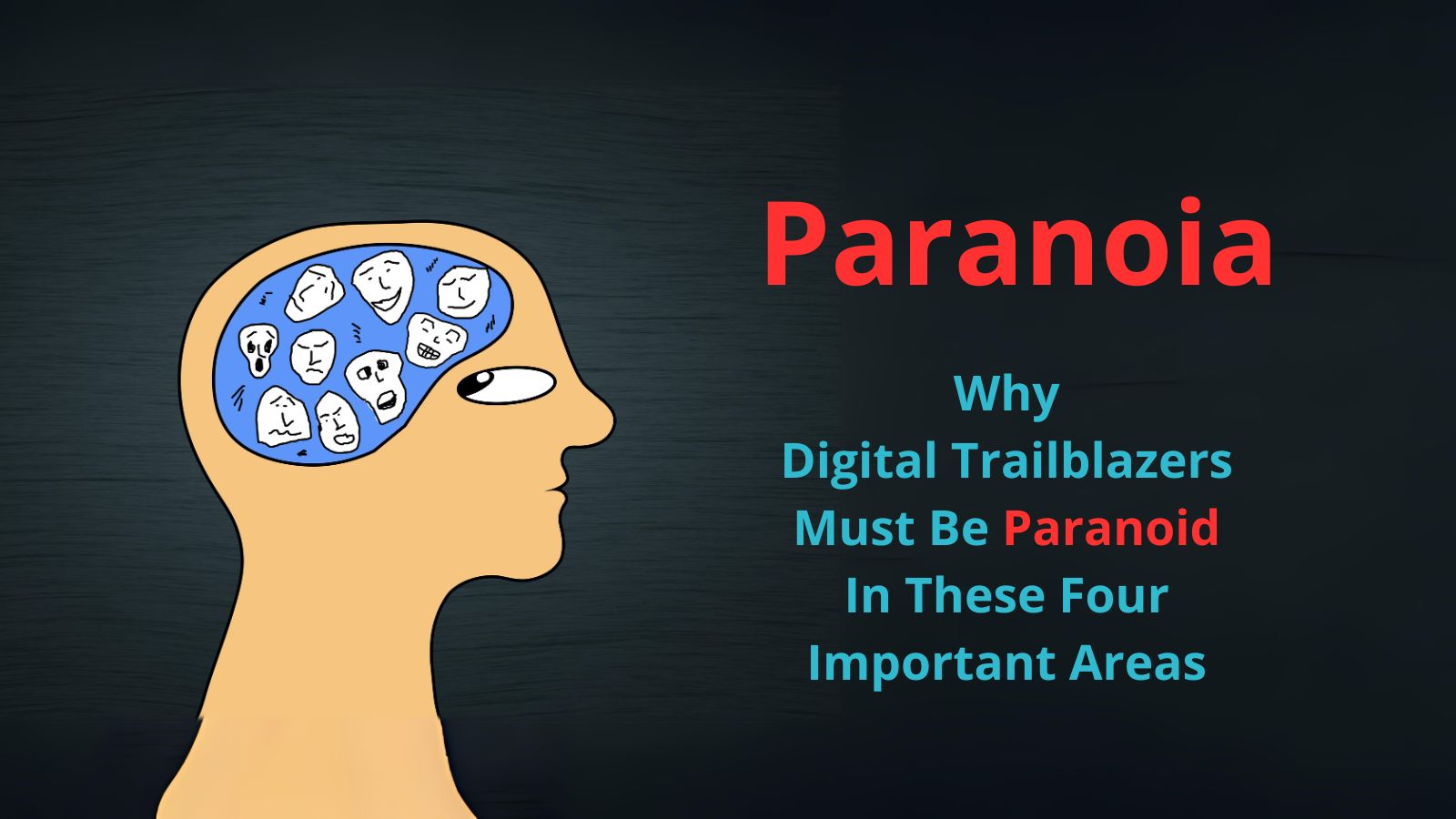My friends and colleagues know I can be paranoid sometimes, but it’s part of my survival instincts. When you’re driving transformation and responsible for operations, as I was for most of my career, you develop anxieties over what can go wrong, how it will impact your objectives, and whether you’re missing opportunities to address a material risk.
What am I paranoid about? It’s a long list, but I’ve boiled it down to four important areas that impact Digital Trailblazers.
1. We’re transforming too slowly
I’m currently listening to Kara Swisher’s
Burn Book, in which she describes how
she forecasted the death of the newspaper classified ad business and other
aspects of print media. I spent several years of my career at a SaaS company
aiming to help newspapers avoid this fate, and the best I can say is that
maybe we gave them a few more years to survive and transform. It wasn’t
enough.
Today, my keynotes on digital transformation often include a slide showing
the 20-year cliff drop in newspaper revenue.
That experience created my top paranoia – are we transforming fast enough?
Should we add another initiative or take on more scope? What’s happening in
the industry, competitors, startups, regulations, emerging technologies, or
other factors that might create new disruptions?
What’s the answer to finding the right transformational velocity?
Continuously challenge yourself to quantify the threats and seek
opportunities to accelerate in key areas. I believe most businesses must
accelerate their digital transformation initiatives
by
driving digital practices
while delivering business value. Stay focused on what you can control and
influence, but don’t burn out the staff by pushing too hard.
2. Unhappy stakeholders becoming vocal detractors
 In Digital Trailblazer, I share the story of walking into a business meeting to demo a new
customer-facing product my team was developing. I was paranoid that unhappy
stakeholders would disrupt the presentation and attempt a coup over how the
product was being developed.
In Digital Trailblazer, I share the story of walking into a business meeting to demo a new
customer-facing product my team was developing. I was paranoid that unhappy
stakeholders would disrupt the presentation and attempt a coup over how the
product was being developed.
My paranoia instincts were on target. Read Chapter 4 for the full story,
which has a happy ending but not without collateral damage.
The issue here is that stakeholders may not tell you right away of their
concerns, and they often articulate their preferred solutions rather than
the underlying problems. Digital Trailblazers, especially product managers
and architects, should cultivate this stakeholder paranoia because when
quiet unhappiness turns into vocal undermining, the politics of turning the
situation around can be daunting.
3. Agile teams are stressing over delivery
These are actually two concerns that become a material risk and one that
Digital Trailblazers should be paranoid about.
My first concern is that the team is stressed. There’s a thin yellow line
separating feeling pressured to stress out and another red line that
separates stressed and burned-out people. “You will always be transforming,”
I wrote in
Digital Trailblazer because new
opportunities, technology disruptions, and market changes require
organizations to re-evaluate digital strategies frequently. Burned-out teams
and people will slow down, stumble on the treadmill, or scarily crash.
My second concern is when agile teams spend too much time on delivery –
implying they are not spending enough time on
planning
or
transformation change management. Even if you hit the target scope and timeline of the active release, the
next one is delayed because the team likely overcommitted – and was probably
pressured to do so – and didn’t invest sufficient time in planning their
features and backlog. Worse can be if they aren’t paying attention to
customer feedback and operating metrics from their previous releases.
I’m paranoid over the stress and the lack of balanced priorities – so much
so that I developed three courses on
StarCIO Agile Planning
to help Digital Trailblazers avoid these mistakes.
4. Teams are firefighting too many “high-priority” incidents
Is the latest incident truly a P1 major incident, or is it an impatient
stakeholder demanding attention to their problem without considering the
business priorities? And if it is a P1, are the right people collaborating
to identify and resolve the issue? Are they communicating effectively and
making smart, data-driven decisions on root causes and remediations?
All hands on deck all the time is not a healthy strategy.
Escalating low-impacting operational issues to executives that trigger fears
and require additional unnecessary communications is a leadership issue.
Chasing white rabbit solutions because the loudest voice on the bridge call
proclaimed the root cause without evidence is a major operational
problem.
When happening frequently and at scale, the three issues are more than
operational issues -they point to a major cultural problem. And it’s really
hard to transform when everyone is in firefighting mode.
I’m paranoid over this problem as I’ve seen too many organizations fall
victim to firefighting and blameful cultures.
Avoid letting paranoia become debilitating
It’s totally human to have some paranoias, and our ancestors’ survival
instincts were tied to paranoia, sensing, and action.
How have I responded to my paranoias?

I built frameworks, including the StarCIO Center of Excellence Programs, to guide Digital Trailblazers on accelerating digital transformation. StarCIO’s thesis:
- More organizations need digital transformation leaders – i.e., Digital Trailblazers – and seek to run more initiatives faster and more efficiently.
- Digital Trailblazers must lead self-organizing teams but must also seek developing standards. We have 175+ activities to help organizations develop them in the key Driving Digital competencies.
- Edicts and demands can’t drive cultural change – it’s developed bottom-up through practices, empowerment, and leading with empathy. We advise and coach Digital Trailblazers so that they have the confidence to lead larger-scale digital transformation initiatives, and we guide them on these 50 Digital Trailblazer attributes.
There’s a path out of paranoia to confidence.
I’m here to help.
Join us for a future session of Coffee with Digital Trailblazers, where we discuss topics for aspiring transformation leaders. If you enjoy my thought leadership, please sign up for the Driving Digital Newsletter and read all about my transformation stories in Digital Trailblazer.
 Digital Trailblazers! Join us Fridays at 11am ET for a live audio discussion on digital
transformation topics: innovation, product management, agile, DevOps,
data governance, and more!
Digital Trailblazers! Join us Fridays at 11am ET for a live audio discussion on digital
transformation topics: innovation, product management, agile, DevOps,
data governance, and more!


No comments:
Post a Comment
Comments on this blog are moderated and we do not accept comments that have links to other websites.